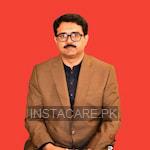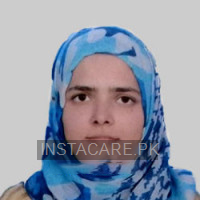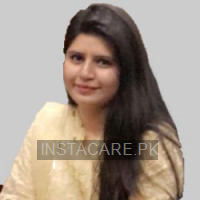Orofacial Myofunctional Disorders - Symptoms, Risk factors and Treatment
Last Updated On Monday, January 5, 2026
Orofacial Myofunctional Disorders in Urdu
Orofacial myofunctional disorders (OMD) بولنے، چبانے، نگلنے، یا آرام کے دوران ہونٹوں، جبڑے، یا زبان کی غیر معمولی آرام کی پوزیشن کو کہتے ہیں۔
Orofacial myofunctional عوارض OMD کی وجوہات
OMD کی وجہ سے ہو سکتا ہے:
جینیات: ایک بچے کے جین اس بات کی وضاحت کرتے ہیں کہ ان کا منہ کیسے بنتا ہے اور زبانی گہا میں مختلف ڈھانچے کیسے واقع ہوتے ہیں۔ کچھ جین کے مسائل عام شکل، دانتوں کی ترتیب، طاقت، اور زبان اور چہرے کے پٹھوں وغیرہ کے کام کو متاثر کر سکتے ہیں۔
اوپری ایئر وے کا تنگ ہونا: مختلف حالات میں اوپری ایئر ویز کا تنگ ہونا جیسے منحرف ناک کا سیپٹم، بڑھے ہوئے ٹانسلز، اور ایڈنائڈز ناک کے ذریعے سانس لینے میں دشواری کا باعث بنتے ہیں۔ اس کی وجہ سے بچہ سانس لینے کے دوران اپنا منہ کھلا رکھتا ہے۔ زیادہ دیر تک منہ کھول کر سانس لینے سے ہونٹوں کے پٹھے کمزور ہو سکتے ہیں جس کی وجہ سے OMD ہو سکتا ہے۔
الرجی: الرجک ناک کی سوزش جیسی حالت ناک سے سانس لینے میں دشواری کا باعث بنتی ہے، اور بچہ منہ سے سانس لیتا ہے، جو OMD کا سبب بن سکتا ہے (جیسا کہ اوپر بتایا گیا ہے)۔
بچے کی عادات: مختلف زبانی عادات جن پر ایک بچہ عمل کرتا ہے، دانتوں کی مستقبل کی پوزیشن پر اثر انداز ہوتا ہے، جو اگر غلط پوزیشن میں رکھے تو OMD کا سبب بن سکتا ہے۔
Orofacial Myofunctional Disorders in English
Orofacial myofunctional disorders (OMD) refers to an abnormal resting position of the lips, jaw, or tongue during speaking, chewing, swallowing, or at rest.
Causes of Orofacial myofunctional disorders OMD
OMD can be caused by:
Genetics: A child’s genes define how their mouth is formed and how various structures are positioned in the oral cavity. Problems with some genes can affect the normal shape, arrangement of the teeth, strength, and function of the tongue and facial muscles, etc.
Upper airway narrowing: Narrowing of the upper airways in different conditions such as the deviated nasal septum, enlarged tonsils, and adenoids cause difficulty in breathing through the nose. It causes the child to keep their mouth open during breathing. Open mouth breathing for a long time can cause the lip muscles to become weak, causing OMD.
Allergies: Conditions such as allergic rhinitis make breathing from the nose difficult, and the child breathes through the mouth, which can cause OMD (as discussed above).
Habits of the child: Different oral habits that a child practices, influence the future position of the teeth, which if positioned incorrectly, can cause OMD. Oral habits which if done excessively, can cause OMD may include:
- sucking of thumb
- lip biting
- nail-biting
- teeth grinding
Symptoms of orofacial myofunctional disorders:
The symptoms of OMD include:
- Lisping
- Keeping the mouth open for a long time
- Open bite
- Pushing of the tongue against or between the teeth during speaking or eating (tongue thrust)
- Taking time to eat
- Abnormal positioning of the teeth
- Protruding of the upper teeth forward (overjet)
Effect of OMD on speech:
OMD may not affect speech in some children. But some children may have problems articulating words correctly. They may lisp and have trouble producing the “s” sound correctly and may pronounce it as “th” in the word thumb.
Diagnosis of OMD:
OMD is diagnosed by different healthcare providers. For speech, a specialist, also known as a speech-language pathologist (SLP), will see how different structures in the mouth are positioned while speaking, chewing, swallowing, and at rest. They may refer your child for further evaluation to different doctors such as:
- A dentist
- An orthodontist
- An ENT specialist
Treatment of OMD:
After diagnosing, OMD, the treatment usually involves orofacial myofunctional therapy (OMT) and is effective when different doctors such as dentists, orthodontists, speech-language pathologists, etc, come together to make the condition better. The treatment is mainly focused upon:
- Terminating the habit of thumb or finger sucking in a child
- Terminating the habit of open-mouth breathing
- Helping the child to breathe through the nose
- Helping the child properly train the muscles for chewing, swallowing, etc.
- Helping to keep the tongue away from the teeth
- Re-aligning the teeth and correct open bite and overjet with orthodontic treatment
- Improve the muscle strength of the muscles involved
- Treating dry mouth
- Improving oral hygiene
Conclusion
OMD can have lifelong effects on the way a child looks, speaks, and eats. It can have a great impact on a child’s self-esteem and, therefore, it is very important to prevent this condition. Try terminating a child's habit of lip or finger sucking or nail-biting. Consult a doctor if your child breathes with the mouth open to get the underlying cause detected. Pay close attention to the way your child speaks or eats, and consult a speech-language pathologist if you notice any problem with your child’s speech. With the right treatment on time, this condition can be treated.




